
First Learn the Main Principles of Building Muscle
If you’re someone who has the desire to build up more lean muscle mass to your body, completely transforming your shape and taking on a much stronger, more powerful physique, it’s going to be important that you take the time to learn the main principles that go into how to build muscle.
Far too many people set the goal to build muscle but then don’t follow through with a properly designed workout program and diet plan.
One of the biggest mistakes that’s often made is all the focus and attention is placed on what’s happening in the gym, while the nutrition element goes seriously overlooked.
Remember, if you expect to add more lean muscle mass to your frame, you must supply the body with enough nutrients and energy to generate this muscle tissue with. Just like you can’t build a house without the bricks and supplies, you can’t build muscle without the amino acids from protein and the energy from carbohydrates.
You can work as hard as you want in the gym, but without the right diet, your efforts will be futile. So let’s get you started on the right path towards the goal to build muscle so you can learn precisely what you need to be doing for maximum success.
1) Introduction To Muscle Building
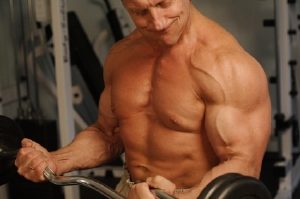
First things first, we must go over the requirements that need to be in place to build muscle.
To begin, you need some form of overloading stimulus.
This best comes from lifting a heavier weight than the body has successfully lifted before, hence causing the muscles to sit up and react.
They recognize that what you’re doing is past their comfort zone as because of this, they’re going to do everything they can to grow stronger so that should they encounter that stress again, they can handle it better.
After the overloading stimulus has been applied, then you need rest. That overloading stimulus will have caused tiny microtears to the muscle tissue and now it’s time to sit back and let the body repair those microtears so that they do grow back stronger, and hopefully bigger.
As this rest process is taking place, you’ll want to supply the third requirement to build muscle, which are the nutrients needed for muscle regeneration. This includes proteins for the building blocks to make the muscles out of and carbohydrates to supply the energy to complete the process.
If you provide slightly more of these nutrients that the body needs just to repair the current muscle tissues it already has, additional muscle tissue will then be built, causing you to become bigger.
So getting all three of these factors in line – an overloading stimulus, sufficient rest, and proper nutrition is what will be required in order for you to build muscle.
Now let’s take a look at these issues in greater details.
2) The Most Effective Muscle Building Exercises
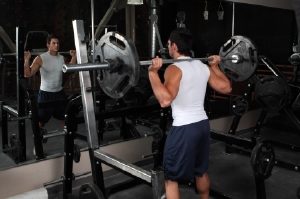
Starting with the workouts that you’re doing in the gym, it’s important to realize that not all exercises are created equally. Some will be much more suited to help you build muscle than others.
The main thing to remember here is that you want your focus to be on multi-muscle movements.
Simply put, the more muscle tissues you can work in any given instant, the greater your muscle building hormonal response will be, the greater the damage you will do to the muscle tissues (thus evoking the growth response, and the more weight you will be able to lift during that exercise itself.
This means that rather than going into the gym and doing all the isolated exercises that so many people figure they should be doing, you want to focus mostly on compound movements.
The Top Muscle Building Exercises:
- Squats
- Deadlifts
- Bench Press
- Barbell Rows
- Pull-ups
- Lunges
- Step-ups
- Shoulder presses
- Leg presses
All of these will work multiple muscle groups at once and span across two different joints as well. Now contrast that to exercises such as bicep curls, tricep extensions, leg extensions, hamstring curls, and lateral raises.
Which exercises work more muscles in total?
The answer should be obvious and that’s why compound movements are the ones to choose for the best results with your goal to build muscle.
Since building muscle is a function of lifting more and more weight on a continual basis, the compound exercises are the ones that will best allow you to do just that.
Training Frequency For The Best Results
Moving on, the next vital component to consider is the training frequency in which you’re working. There is a very fine balance between not doing enough work in the gym and doing too much. Remember, rest is vital to success.
If you aren’t providing sufficient rest because you’re training too frequently, then you’re literally going to be going back into the gym for your next session when your muscles are already in a broken down state.
What this means is that now rather than being able to build muscle, you’ll just further break them down. Do this often enough and you’ll actually lose muscle rather than gain it. Not quite what you’re going for.
The optimum training frequency that you should be working any given muscle is somewhere between two and three sessions per week, making sure to take at least one full day off between working each individual muscle.
It’s important if you’re doing a body part split type of program (anything other than a full body program) that you consider all the helper muscles that are being called into play. For example, some people will work chest on Monday and then figure they can work their triceps on Tuesday.
Not so. Remember, the triceps will be called into play whenever you’re doing a chest press exercises, therefore working them the next day would violate the 48 hour recovery period necessary to prevent overtraining, thus this should not occur in a properly designed workout program.
That’s one of the biggest reasons why if your goal is to build muscle, full body workouts and upper/lower split workouts tend to work best. They simply provide the best level of training frequency to build muscle while still supplying plenty of rest and recovery time so that you can grow stronger and bigger.
3) Sets, Reps and Rest
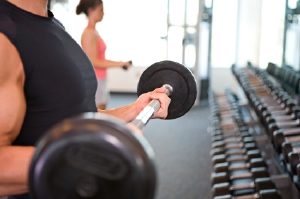
Another important element to be considered when attacking the goal to build muscle is how many sets and reps you’re doing, along with how much rest you’re taking.
It’s important that you get these correct otherwise you won’t be evoking the right growth stimulus that’s necessary for results.
The key thing to keep in mind here is that if your goal is to build up a maximum level of strength, you should work in the lower rep range of 4-6 reps.
If, on the other hand, your goal is focused around muscle size (along with some gains in strength, but that’s not the priority), taking the rep range slightly higher to 7-10 reps would be what you want to do. This proves to be slightly better for hypertrophy purposes, which is the name for actual muscle size growth.
Generally a combination of both rep ranges is ideal as then you’re hitting the muscles with a high amount of variety. Since the muscles are going to be fast to adapt (after all, that is their goal after they encounter a stimulus they’ve never seen before), constantly changing something about your program – whether it’s the exercises you’re doing, the reps you’re completing, the sets you perform or the rest you take is important for success.
This will keep the muscles guessing as to what comes next so they never get too comfortable and stop responding.
Getting back to the rep discussion, aim for reps somewhere in the 6-10 rep range for the compound, multi-muscle exercises and if you are going to add in a few isolated exercises at the end of your workouts, take these slightly higher into the 8-12 rep range.
Since you typically won’t lift as much weight on those exercises (since there are few muscle fibers firing during the movement pattern), you can utilize the higher rep range as these two elements are directly correlated with each other. The higher you take your rep range, the less weight you’re going to lift and vice versa.
Now, moving on to the set element of things in your program to build muscle, your sets will also be correlated with how many reps you’re doing. Ideally you should aim to complete about 20-30 reps per exercise so you can break this down by how many reps you’re doing.
If you’re taking your exercise to five reps for example, you would perform four to six sets total. If you were doing sets of 10, three sets would be sufficient.
Keep in mind this isn’t written in stone – you can move slightly under or over that range depending on your body and training set-up, but it’s a good general rule to follow to ensure you’re doing the right amount of volume.
Finally, looking at rest, when you are focused on the goal to build muscle, you want to ensure you are always able to lift as heavy as possible, therefore using slightly longer rest periods will be important. Aim for around 90 seconds to 3 minutes after each exercise is completed with your compound exercises and then aim for 30-60 seconds rest after each of your isolated exercises.
If you were focused on fat loss you would want to be utilizing shorter rest periods in order to provide a metabolic boost from the workout, but when focused on the goal to build muscle, this isn’t the priority. Instead, you want to be sure that your muscles are fully recovered so that you can lift a maximum amount of weight on your next set.
So that covers the key factors to know about your workouts to build muscle, now let’s take a look at the nutrition element of things.
4) Setting Your Calorie Intake For The Best Results

The very first thing that you should be focused on is getting your calorie intake set properly. As we mentioned earlier, if you want to be successful with your goal to build muscle, then you must make sure that you’re taking in a sufficient amount of calories.
For most people looking to build muscle, this will mean approximately 16-20 calories per pound of lean body mass. If you’re a naturally thin person who struggles with gaining weight or you find yourself quite active throughout the day (you have a very active job), then you’ll want to shoot for the higher end of that range, while if you’re someone who is more sedentary or has a tendency to gain body fat, aim for the lower end.
Remember that calorie intake should always be re-assessed on a continual basis depending on the results that you see. If you aren’t gaining muscle, this indicates that you aren’t eating enough calories and should increase it, while if you’re gaining body fat while you build muscle, that indicates you’re taking in just a few too many calories and should cut back.
Finding the proper level is key for success.
5) Protein, Carbohydrate and Fat Requirements

Optimal Protein Requirements For The Best Results
Moving along, the next factor to think about is your protein requirements. Protein is one macronutrient that many people who want to build muscle often get confused with.
The common thought process is that the more protein they eat, the faster they will build muscle. While it’s true that you will have to be certain to meet your protein requirements for the day as protein is literally what supplies the building blocks to generate this new lean muscle mass, what’s not true is that more protein means more muscle.
Your body has a limit to how much muscle it can build each day and excess protein taken in after that will just be broken down and either used as a fuel source of stored as body fat.
Aim for one gram of protein per pound of body weight and you’ll be taking in enough to support your goals to build muscle.
The Best Sources of Protein Will Be:
- Chicken Breasts
- Egg Whites
- Fish
- Turkey
- Low-fat Dairy Products
- Lean Red Meat
- Whey Protein Powder
Add these in with each meal and snack that you consume and you should have no problem with this dietary requirement.
Smart Carb Consumption
The next element of your diet to build muscle is carbohydrates. You absolutely must take in carbohydrates when you want to reach this goal.
Why? Simply put, carbohydrates are the most anabolic substance that you can consume.
This is due to the fact that eating carbohydrates will cause the body to release a hormone called insulin, and insulin is the primary ’tissue building’ hormone in the body.
While this isn’t always a good thing as too many carbohydrates in the face of no exercise would mean excess fat is gained, when you are training hard in the gym and eating carbohydrates, this insulin release means you build muscle.
Secondly, carbohydrates are what will also supply all the energy for you to execute each intense training workout as well as to complete the muscle building process itself, so you’ll definitely want to get these in.
It’s very important that you place a high intake of carbohydrates right after each workout session you do in the gym as this is the primary time when you will be in the mode to build muscle.
Load up on simple carbohydrates that are fast acting such as dextrose, maltodextrine, waxy maize, white rice, or white bread immediately post-workout and then follow that up about an hour later with a slower digesting source that will keep your blood sugar levels stable in the hours to come.
There is no set requirement for carbohydrates in your diet, but you should aim to take in at least 1-1.5 grams per pound of body weight, depending on your calorie needs. Some people may find they need even more than this.
Apart from the post-workout period, other great sources of carbohydrates to eat when you want to build muscle include:
- Oatmeal
- Brown Rice
- Quinoa
- Whole Wheat Pasta
- Whole Grain Breads
- Bran Cereals
- Sweet Potatoes
Factoring Fats Into The Picture
Finally, the last nutrient to consider is dietary fat. Getting sufficient dietary fat in your day will help ensure your testosterone levels stay high, which is important for the muscle building process to take place.
Aim to eat fats in all meals except the pre and post workout meal, as at this point they will only slow digesting down and work opposite of the goals you’re trying to achieve.
Make Sure You Choose Healthy Fat Sources Like:
- Nuts
- Nut butter
- Oils
- Seeds
- Avocado’s
- Fatty sources of fish as these are what will support good health and a lean body.
Like carbohydrates, there is no set requirement for healthy fats, so you will make up the remaining calorie intake from this nutrient, keeping in mind fats contain nine calories per gram while proteins and carbs both contain four.
6) Supplements That Can Help Repair Muscle
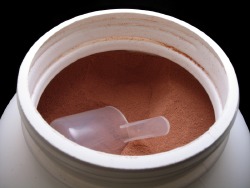
Once you have your diet set, then you’re likely going to start wondering what supplements you should focus on to help achieve success.
The main point to remember here is that you want to keep it basic. When you get too held up focusing on the latest and greatest supplement, all it’s going to do is take the focus off your diet and workout, which are much more important to help you reach your goal to build muscle.
Instead, stick to the basics. A quality whey protein powder to help meet your protein needs, a fish oil supplement for healthy fats, creatine to support high energy throughout your workout, and a multi-vitamin for assurance that you aren’t falling deficient in key nutrients will be all you really need.
If you use these in combination with a good diet to build muscle, you will have unbeatable results.
7) Rest and Recovery Are Essential For Muscle Growth

Finally, the last point to touch upon with your goal to build muscle is getting sufficient rest and recovery. We’ve already mentioned that without that recovery process, you’ll just be breaking your muscle tissues down further and further.
Remember though, there are many elements that go into recovery. You need to focus on maintaining a low level of everyday stress (as stress will hinder your recovery process), you need to make sure that you’re sleeping at least eight hours per day as this is when the body goes into primary rebuilding mode, and you must make sure that you’re not performing hours of intense cardio or other activities per week.
Rest means rest so do your best to sit back and relax. Let the muscle building process take place.
8) Conclusion About Building Muscle
So there you have the primary points that you must remember if you want to be successful with your goal to build muscle. It’s very vital that you take a comprehensive approach rather than just focusing on a few things that you’re doing in the gym.
When you can get your workouts, your diet, and your lifestyle all lined up and following along the proper muscle growth principles, that’s when you’re really going to see the degree of results that you’re looking for.
Make sure that you always pay attention to your body and learn to read what it’s telling you. Those who are most successful with the goal to build muscle listen up and when their body needs rest, they provide it. When it needs to work harder, they do that too.
Once you take the time to start learning your body, you’re going to find that you naturally just know what you should be doing with your workouts and diet and seeing the continuous results you’re after will be that much easier.
By using all of the concepts that we’ve discussed in this article to come up with a proper workout plan and a good diet set-up, you will be well on your way to creating your very own body transformation.


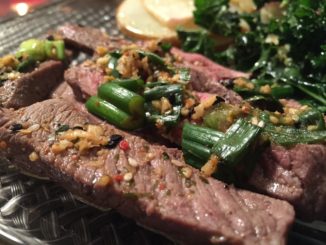
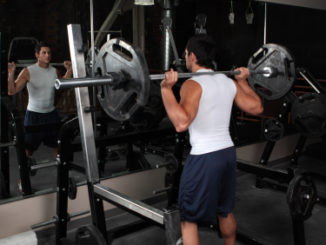

Be the first to comment